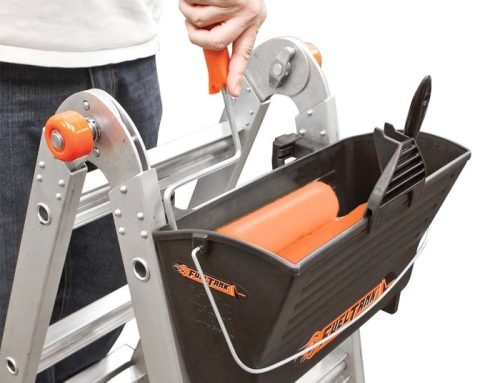Trump’s controversial border wall project, a cornerstone of his election campaign, shows no signs of disappearing, despite it causing the longest government shutdown in US history. Late last year the crowd-funding site GoFundMe saw two rival campaigns centred around the project, one to raise funds for it (which was the more successful of the two) and one to raise money to buy ladders to help people cross the border wall. The ladder campaign was a little tongue in cheek, with organisers stating that the money would actually be going to non-profit organisation The Refugee and Immigrant Center for Education and Legal Services (RAICES). They kept the name of the campaign focused on ladders as a deliberate provocation to the pro-Trump side.
More recently footage has emerged of migrants crossing the wall using a ladder, descending to the American side using a rope. The ladder was taken to the spot by someone who then took it back to its hiding place, so it wasn’t left there for anyone else to use. This deliberate crossing of the wall has angered some people, and also proved that a wall is not an efficient way to stop people crossing the border illegally – most illegal migrants in the US arrived legally, but then outstayed their visas. Additionally, much of the border is already marked by walls and fences, so the idea that a bigger wall will stop people illegally crossing over altogether doesn’t hold much water.
The footage doesn’t show clearly what type of ladder was used, but the wall at that point is 18 feet (5.4 metres) tall. This is the minimum proposed height of the new border wall, although 30 feet (9 metres) is said to be the goal height for most of the sections. What type of ladder would be needed to cross the tallest sections of the wall?
An industrial ladder from Lyte is a good bet. It is a three section extension ladder which has a maximum height of 34 feet, which won’t actually reach the top of the tallest parts of the wall safely, but we don’t think people desperate to cross the border are particularly concerned with risk assessments or health and safety. It can take a load of 175 kilos, so it would withstand someone climbing up carrying a child, and as it’s a heavy duty ladder would be ideal for regular use. At 42 kilos, it’s a little heavy for one person to carry around on their own but could be carried comfortably between two people.
This rope operated industrial ladder would also be a good bet. With a working reach of 36 feet it gets a little higher up the wall, but still not right to the top. It’s a little heavier and longer than the three section ladder, but gives a couple of extra feet of height which could make all the difference. To use a ladder to safely scale the wall it would need to be at least 40 feet long, and at that length it is nearly impossible to make a ladder that won’t sag dangerously in the middle.
This solution is hardly inconspicuous and not easy to take down and hide, but the safest way of scaling that height is to use a scaffold tower. You could, potentially, hide the sections of this kit at the base of the wall and erect it under cover of darkness, but it would still be a very risky business. The Youngman Boss scaffold tower has a platform height of 9.2 metres, which is just over 30 feet, making it ideal for scaling the initial height. Wide stabilising legs make this extra sturdy and safe to use and it would allow people to cross the wall, without risking life and limb on a shaky ladder.
We don’t currently ship to the USA, but if you’re in the market for a tall scaffold tower or an extra-long ladder on UK shores then you should buy with us for quick, next day delivery and unbeatable prices – you won’t need to set up a crowd-funding campaign to buy our ladders!






Leave A Comment
You must be logged in to post a comment.